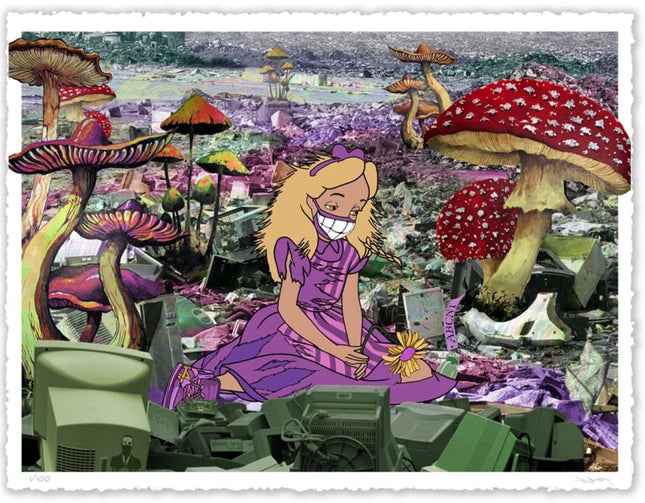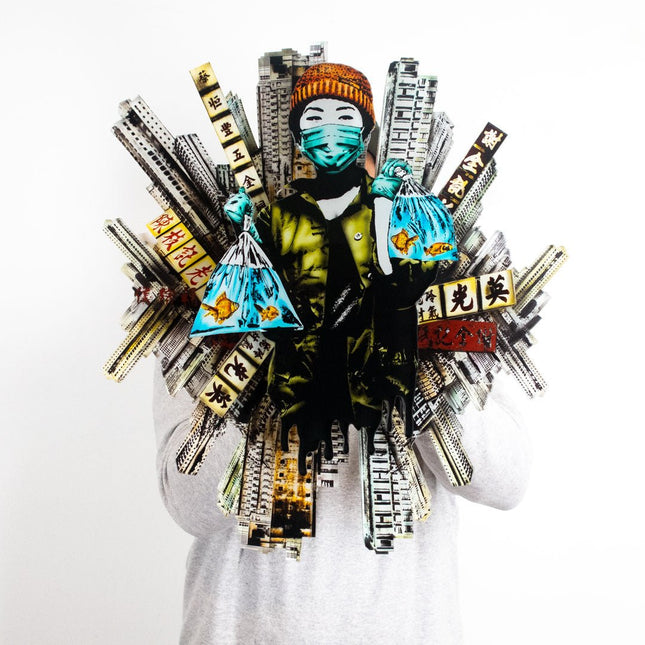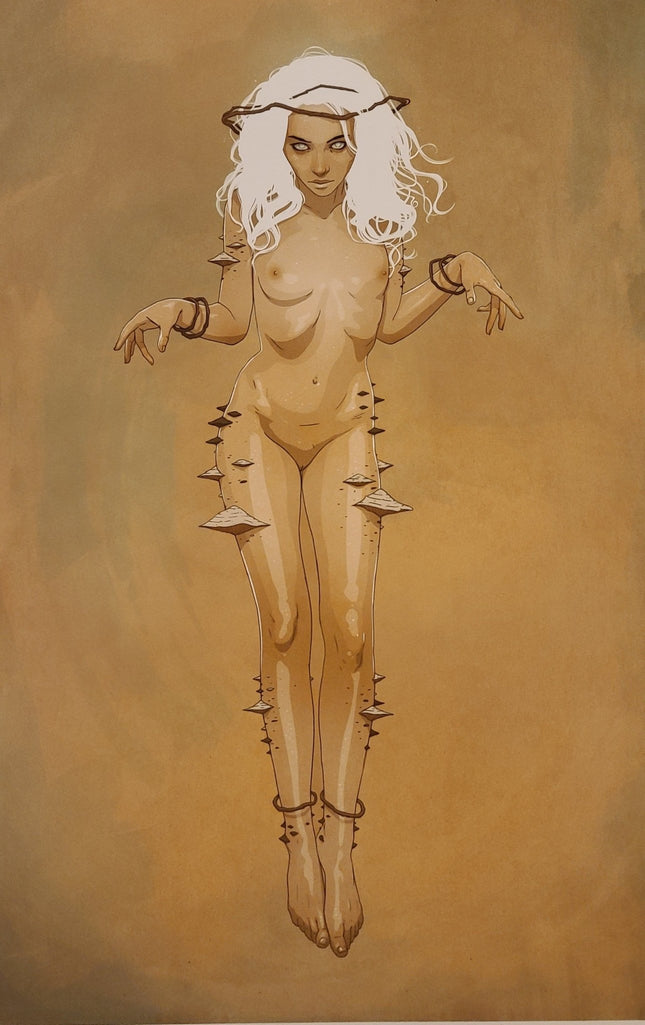
Virus

ABCNT Alice in Wasteland Acid Archival Print by ABCNT
Alice in Wasteland- Acid Limited Edition Archival Pigment Fine Art Prints on 330gsm Cotton Rag Museum Archival Paper by Graffiti Street Art and Pop Culture Artist ABCNT. ABCNT x Silent Stage Gallery Alice in Wasteland Fine Art Print "Acid" Edition Edition of 100 Print Measures 18″ x 24″ (approx.) 330 gsm cotton rag museum archival paper Hand Deckled...
$250.00

Eddie Colla Cacophony Laser Cut Acrylic Archival Print by Eddie Colla
Cacophony Hand-Painted Multiple Archival Pigment Print on 3 Tiers of Laser-Cut Acrylic Panel ready to hang by Eddie Colla Graffiti Street Artist Modern Pop Art. 2020 Signed & Numbered Limited Edition of 25 Laser Cut Acrylic Artwork Size 18x18 "The Goldfish Girl was created almost a decade ago. I often revisit it, and she has been the longest continuing character I've created. I often write backstories for these characters to help me create the pieces, but they are generally never shared with the viewer. The Goldfish Girl was born in mainland China and raised mostly by a single father. Her mother passed away when she was 18 months old from cancer. She was often very ill as a child and was eventually diagnosed with a compromised immune system disorder, although a precise diagnosis was never given. This is the reason for always wearing the mask and gloves. Her father bred Goldfish for a living and taught her that trade as a kid. They worked side by side and rarely had visitors because of her condition. Often being extremely ill and also losing her mother made her childhood difficult. As most children do, she tried to find a reason for her misfortune, a reason for why all this had happened to her and her father. Eventually, she believed that her illness and her mother's cancer were punishment by nature. A curse for toying with nature by breeding goldfish. Eventually, her father passed away as well. Needing to make a living and also to taunt fate she illegally immigrated to Hong Kong. There is a famous goldfish market in Mong Kok on Tung Choi street, but it's commonly called goldfish street. With a compromised immune system the most dangerous thing to her was other people. As a challenge to fate, she moved to one of the most densely populated cities in the world. She got a stall on Tung Choi Street. This is her challenge, to taunt fate and win, becoming the master of her own fate. These images are vignettes of her life in Hong Kong. I've never given the character a name. Sometimes she is pictured with a boombox because music becomes a central companion to her mostly solitary life. In the piece Cacophony I wanted her to literally be surrounded by the city. In some way, I think I tried to create a character that embodied a lot of traits I aspire to. To remind me.” - Eddie Colla
$1,736.00

Jason Levesque Feral Nude Giclee Print by Jason Levesque
Feral Nude Artwork Giclee Limited Edition Print on Fine Art Paper by Pop Culture Graffiti Artist Jason Levesque. 2014 Signed & Numbered Limited Edition of 50 Artwork Size 12x18
$129.00




